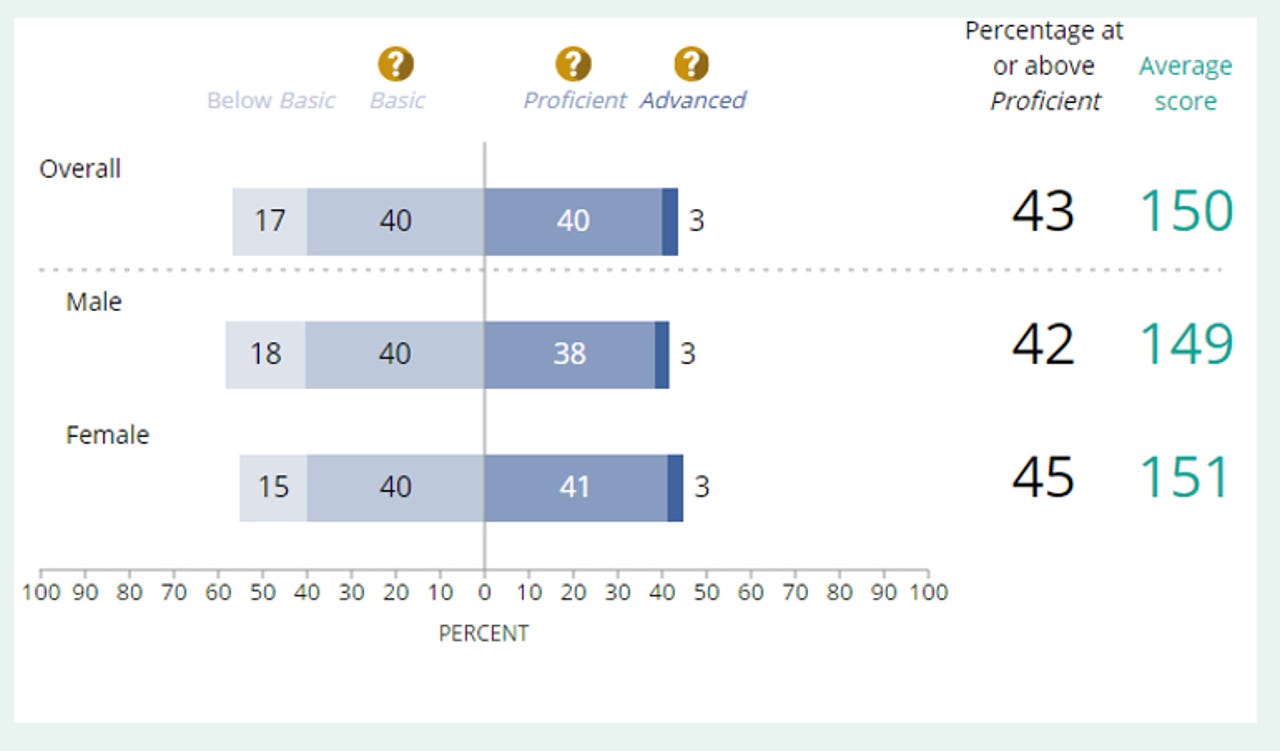Girls vs boys in IT literacy: In first US tests, who came out on top?


Girls scored higher than boys in the ICT content area and in Communicating and Collaborating.
Eighth-grade girls scored higher than their male counterparts in the first US tests of technology and engineering literacy.
The US government's National Assessment of Educational Progress (NEAP) project tests, conducted in 2014, found that 45 percent of eighth-grade girls were proficient or better compared with 42 percent of boys.
It was the first test of technology and engineering literacy (TEL) run by NEAP for the Nation's Report Card, which also scores proficiency levels of students on economics, geography, mathematics, reading, science, and US history.
The technology and engineering literacy tests assessed 21,500 eighth-grade students in 840 public and private schools across the US.
TEL content areas in the tests included Technology and Society, Design and Systems, and Information and Communication Technology (ICT), while TEL 'practices' covered Understanding Technological Principles, Developing Solutions and Achieving Goals, and Communicating and Collaborating.
Girls scored higher than boys in the ICT content area, and in the Communicating and Collaborating, and Developing Solutions and Achieving Goals practice areas.
The tests also identify the percentage of students who are at or above proficient by race/ethnicity.
ICT tasks included creating content for a website and promoting a teen recreation center.
The tests also identify the percentage of students who are at or above proficient by race/ethnicity. It found that 56 percent of white students and 56 percent of Asian students attained this level, while 18 percent of black students and 28 percent of Hispanic students did so.
NEAP notes that white and black female students outperformed their male peers in the tests, while Hispanic and Asian students performed at the same level as their male peers.
As part of the tests, NEAP also conducted a survey that asked students where they learn about technology and engineering.
It found that 63 percent of eighth-graders reported family members taught them most of what they know about building things, fixing things, or how things work. A further 19 percent reported being self-taught, while just 13 percent cited teachers.
Overall only 43 percent of eighth-grade students were proficient or above in these tests. However, more eighth-grade students were proficient or above in TEL than any other field, according to the report.